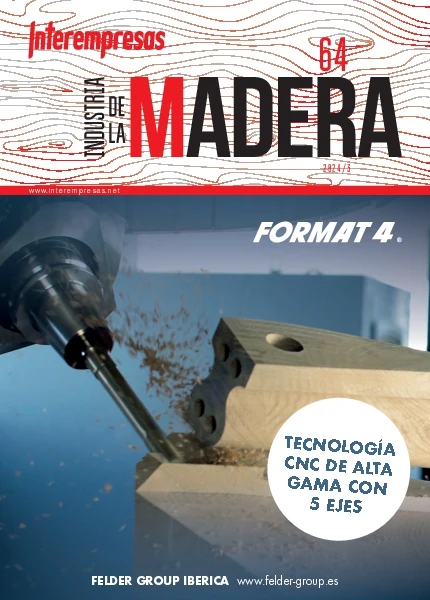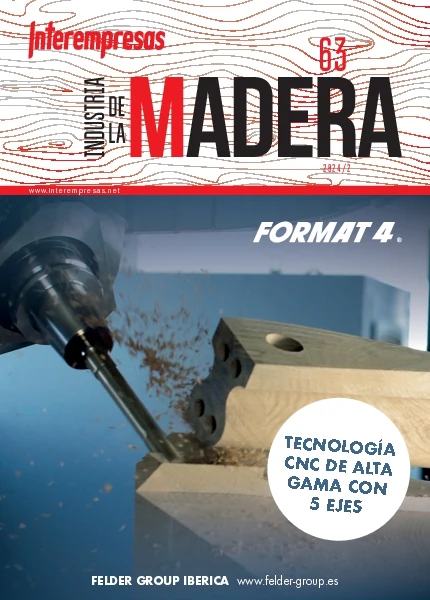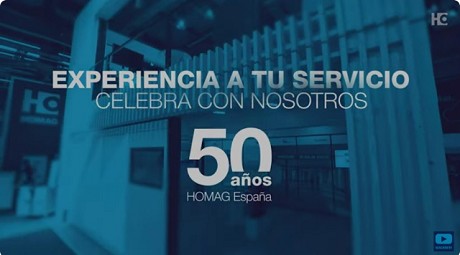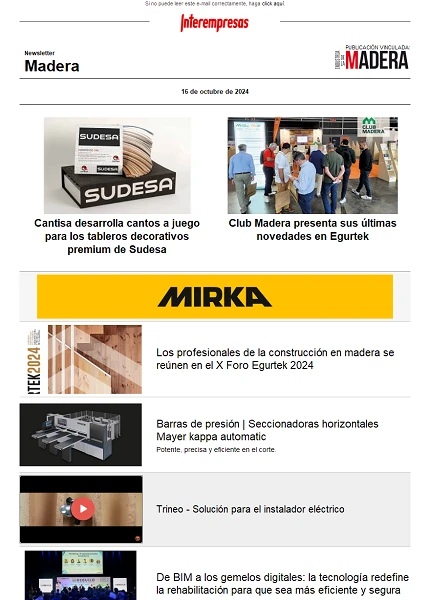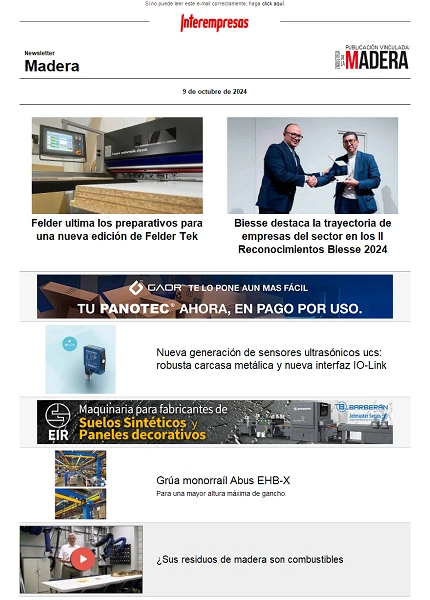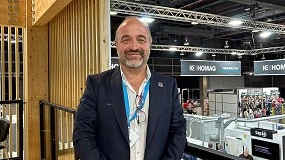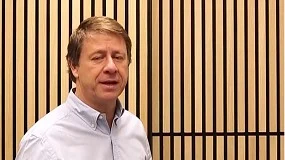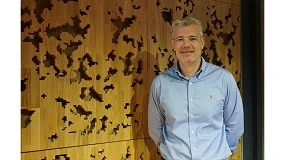Innovar In materials: the future of the companies of the hand of Cenfim and FiMat
24 February 2012
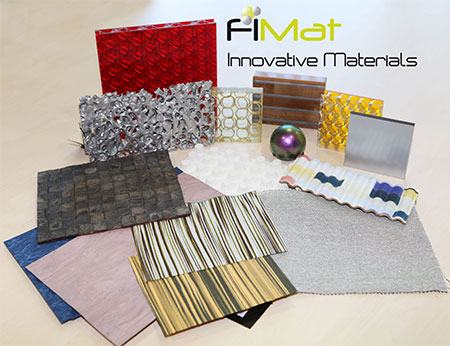
The new materials arose from projects of investigation and development of the aerospace sector, of defence or military. However, at present they represent an important portion of the market that engloba a lot of sectors. Besides, these materials tend to earn greater importance when diversifying his applications and offer prices more competitive in front of the traditional. By this reason, the industries of the different sectors will have to go in in a process of transformation and reconversion to the use of compound materials, if they wish to conserve his quotas of market in front of his competitors.
Calculates that at present the number of available materials is between 40.000 and 80.000. Never it has existed a period in which the evolution of the materials was so fast and the rank of his so miscellaneous properties. The needs of the surroundings in the sector manufacture of furniture and elements of carpentry force to the companies to the continuous development of new products with the object to keep and improve his competitive position. The basic guidelines of innovation in the products are directed fundamentally to reach new functionalities or to improve the aesthetics, generating a greater value added.
However, to reach these aims is necessary to realise a continuous investigation of the tendencies in the markets, no only regarding product finished but also regarding the availability of materials and machinery. In this sense, unlike other sectors that have characterised by an intensive investigation for the development of new materials by part of the companies, in the sector habitat this investigation has not carried out. They have gone incorporating pertinent materials of other sectors that fulfilled the necessary requirements to be used, but that had not been developed to measure for this. It is the case of the Corian, material developed by Dupont for the aerospace industry, and that at present uses in infinity of applications for the sector of the habitat.
Nowadays the companies of this sector are beginning to concienciarse of the importance in the innovation of materials like tool to achieve develop products with better properties, new applications and a greater character diferenciador. An example of product designed for the sector is the Krion, developed by the company Systempool to apply it of specific way in the habitat.
At present, the axles of development of new products for the sector that incorporate innovative materials direct , mainly, to the improvement of three basic appearances:
- The care and respect by the environingingment
- A process of diversification in which new materials go in to configure the product finished to be able to access to new niches of market or new channels
- The tecnificación of the same (no only regarding his provision but in the ease to automate his use), taking into account always the tendencies and tastes of the consumers.
New materials for the sector of the habitat
In a society as ours, in continuous research of new points of reference, the innovation for the habitat treats to arouse new emotions. The design plays a decisive paper that little by little goes accompanying by a restlessness and greater interest in the research of new materials that goes arising between the manufacturers.
New formulations, new compound, utilisation renewed of materials known from decenios, utilisation of materials little common, sensitive materials to the heat, materials with memory of form, new technicians of silk-screening, and personalización of products, find between the multiple options.
See where carry us the new tendencies in materials for the sector of the habitat:
Madera
The wood keeps on being a very used material in the habitat, with the novelty that now they join to the usual requirements the criteria of ecocertificación, well because the wood come from of a forestry ecogestionado or because the wood have been reutilizada or recycled to give place to a new product.
At present develop new materials that combine the wood or wooden fibres with metallic materials, plastics or ceramic that give place to compounds with a combination of properties of big interest for determinate applications. An example can be the combination of wood with polycarbonates that create materials of design with a lot of luminosidad, or the combination of wooden fibre and plastics that gives place to the WPC (Wood plastic Composites). On the other hand, the wood is employing in processes biotecnológicos with the intention to create biodegradable polymers with properties very interesting, as that they are fireproof or hydrofugous.
The ceramic materials and glasses have evolved for the sector combining with other substances to the equal that with the wood. It is the case of materials that are combinations of ceramic particles agglutinated by means of a polymer that create material very resistant and with a ceramic appearance, but that characterise by a greater calidez and a better resistance to the impact. The glass follows having an important paper in the design of furniture, contributing his main characteristic of transparency, reflection and depth, which provides to the greater environingingment luminosidad and amplitude. This material also is advancing in criteria of sustainability, developing from material recycled and being coloreado with compound less aggressive for the environingingment.
plastic
The plastics are material that have an innovative character, since they make us possible crowd of modifications in his mechanical characteristics, in the variation of colours, of finishings, in the way to be processed… Are material very versatile that allow us design them for the concrete application that want to them give.
The evolution of these materials for the sector of the habitat has given place to his reinforcement looking for better mechanical properties. Regarding the improvement of the sustainability, the combination of two of his greater problems, his low durability and his high environingingmental impact, is giving place to the development of biodegradable plastics by the action of the water and of the sun, which minimises his negative impact in the ecosystem. Also they are beginning to produce plastic from renewable resources, as they can be vegetal oils, cellulose and other organic compounds. This type of plastics designate biopolymers or bioplásticos.
Textile
The evolution of the textile at present has two main slopes: the textile technicians and the textile intelligent. For the sector of the habitat the textile technicians have evolved thanks to the employment of new threads or fabrics that allow us achieve textile fireproof, hydrofugous, three-dimensional, antiolores, antibacterias…, obtaining products with new physical characteristics or improved.
Regarding the textile intelligent have allowed us develop furniture with new applications as they can be the integration of circuits, furniture that changes of colour in function of the temperature or even pieces of furniture with own lighting.
Composites
The materials composites, also called “compound materials advanced”, are entering increasingly in the sector of the habitat. The most known characteristics of these materials are the ligereza, the big resistance to the traction, good thermal sensors and acoustic insulation, stability and big dimensional precision, high resistance to the crash and the fatigue, maintenance almost invalid, etc.
Today day, with the level of technological development of the 21st century, can manufacture a big variety of compound materials, with very distinct mechanical characteristics finals. The complexity of his application roots in choosing the optimum composition for a concrete application. A good example of composites are the new glaze with nanopartículas that allow us obtain surfaces biocidas, autolimpiables or with better mechanical resistances.

What contributes the innovation in materials?
For the companies of the sector, the innovation is a very adapted tool to face up to the imperative changes that suffers the market. Some innovan putting in the new market products, whereas others do it developing new procedures that allow them improve his product or even abaratarlo. This is possible in a lot of cases thanks to the development of new materials.
The research of new materials has been always an area of big scientific and technological interest from the point of view of the investigation in basic sciences and engineering. Besides, at present the investigation of materials for concrete applications in the industry has a very important paper in the strategy of a lot of companies. Those that have decided to incorporate or develop new materials are expanding his quota of market and obtaining profits in this so complicated period.
Some of the profits that contributes the innovation in materials to the companies are:
- Create a different product of the competition, more competitive and more attractor trucks for the consumer
- Cover a need of market until the unsolved moment
- Diminish the impact in the environingingment with a solution 'green friendly'
- Integrate technological advances placing the company like leader and adapting to the changes of the surroundings
- Diversify risks by extension in the range of products, in the marketing venues, objective customers, etc., going in in new markets and sectors no foreseen initially
- Develop 'know-how' typical of the company that positions it in a more advantageous situation in front of his competitors.
The companies that innovan of effective form through new materials grow of form more sustained in his sales, have of customers more loyal increasing the quota of business with them, achieve an upper price in the market thanks to the differentiation that provides the innovation and generate an elder cash-flow, what promotes the innovation (is a circle virtuoso). But no only the company takes advantage of , the customers also benefit of the innovation because they obtain greater satisfaction to his needs and find a more attractor trucks offer, of greater value.
All these profits allow to the company achieve the most important: have control on his future thanks to his capacity to modify the competitive rules and create new markets by means of the development of new products promoted by the innovation in new materials.
Available methods in the selection of materials
The selection of a material can arrive to turn into a quite complicated task because of different reasons: big number of available materials; selection of criteria and parameters for the research; evaluation of costs… Thus they exist different tools that facilitate us this task.
The majority of the methods split of a wide range of available materials, which have to identify first and afterwards go in to analyse his concrete characteristics for refinar the research of the most suitable material. In general, the refinement does in accordance with the properties demanded by the component to design and sustentado with criteria eat: availability, ease of obtaining, life of service, environingingmental factors and costs, amongst other. Of this form, arrives to the selection of an only type of material, which has to result the most appropriate for the end pretended.
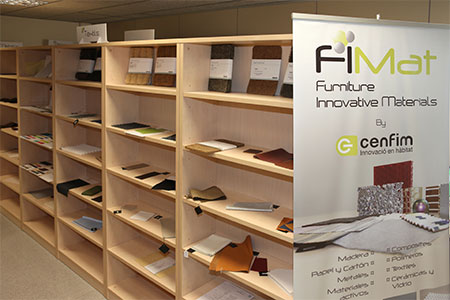
Methods more usual in the selection of materials:
to) traditional Method. With this method the engineer of materials chooses the material that believes more adapted in function to the experience of components that have a similar operation and that have showed good results. This method is also known like “materials of engineering of similar parts”. However, the use of this method drives in occasions to serious problems since it does not do a real study of the behaviour of the component for the application and this can drive to failures of the material due to the fact that they have not taken into account all the factors.
b) Graphic method. This method supports in graphic (like the diagrams of Ashby, appears 1), in which they relate by pairs some properties of the materials. In these maps can do an approximation of the most suitable material (pertaining to a determinate family of materials), in function of the most important properties that has to possess the component. In the maps relate , between others, properties like resistance, module of elasticity, density, tenacity, thermal sensors conductivity and costs.
c) Method with help of databases. Exists a wide range of bases s On materials that are the result of investigations in Of the same. The selection of materials with help of these And data splits of the knowledge of the main properties thatto have to have for a specific end. The program asks then the requisitos or properties that has to have the component and list one or varios material that can fulfil said specifications.
d) I mention of experts. Exists a big number of experts in materiales for the different industrial states. The contracting ofto this type of experts has a true cost, but with this help horra time and effort to the hour to select a material. Besides, hoy in day are appearing different libraries of materials innovadores that well can be multisectoriales or specific forto a determinate sector.
In Cenfim have created FiMat, the library of materiales innovative for the habitat. In this space the companies of theto sector will be able to find solutions for the incorporation of materials innovadores in his products.
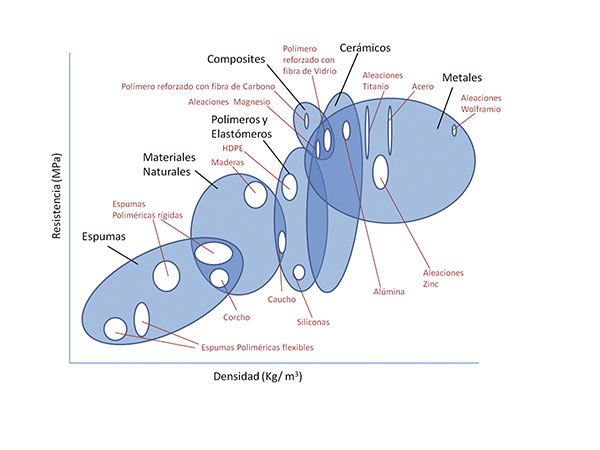
The library of materials of Cenfim
With the aim to facilitate to the companies the incorporation of innovative materials, Cenfim created the library of innovative materials FiMat. It treats of a compilation of innovative materials of different sectors: aerospace, car, construction...
The most interesting of these materials is that they can have multiple new applications in the sector of the habitat and that also include some materials developed specifically for the sector.
FiMat engloba 8 families of materials: wood, polymers, metals, composites, active materials, paper and cardboard, ceramic and glass, and textile.
Cenfim Has different tools so that the companies can incorporate innovative materials to his products. The tools are:
- Access to two international databases and multisectoriales, as they are Mater and matériO, that have more than 4.000 materials. Cenfim Has an agreement of collaboration with Mater Fad for the exchange of information and the realisation of projects of conjoint way.
- A materialoteca physical, with some 300 exposed samples in shelving. In this location the interested in incorporating new materials have a place to the that attend in research of new materials and ideas, since in the election of a new material is necessary to touch it and see it in situ.
- A laboratory of prime matter and another of product finished, to be able to evaluate the incorporation of the new materials in each stage of said process.
- A software to do analysis of cycle of simplified and expert life capacitados to be able to carry out said task.
- Technical qualified that work in the areas of materials, industrial design, product and processes, marketing and investigation of markets, contributing a vision and know-how multidisciplinary to optimise the incorporation of these materials.
- The materialoteca is an ideal tool for designers, interioristas, architects, prescriptores of contract, manufacturers of pieces of furniture and other products of the habitat and, in general, for any company related with this sector.
- With this tool manufacturers of furniture can find material that substitute to others achieving develop a more competitive product, of greater value and even conferring him new properties or applications.
- Companies that work for the contract can find innovative materials that offer new designs, better characteristic and new functionalities to his customers, with a fast and efficient answer, factor to have very in account in this type of channel.
- This library opens a new possibility to interioristas and designers in the application of materials with new designs, new textures, new geometries, combination of materials, etc.
This space has a big quantity of materials with criteria of innovation and especially of sustainability, facilitating his utilisation by the professionals of the sector that can save long and effort obtaining direct and quickly the necessary information for the development of his work.
The Centre of Difusió Tecnològica of the Fusta i Moble of Catalonia (Cenfim) was constituted in the year 2005 like a non-profit private foundation with majority proportion of companies of the sector wood and piece of furniture in his patronato. They are members founders the employers' associations of the wood and the piece of furniture of the 4 Catalan provinces, the Confederació Catalan of the Fusta, l'Ajuntament of the Sénia (city south of the province of Tarragona where has his headquarters Cenfim), the Universitat Rovira i Virgili and the Cidem (Centre d'Innovació i Desenvolupament Business, of the Departament d'Innovació, Universitat i Company of the Government of Catalonia).
FiMat
Cenfim assisted to Fimma-Maderalia 2011 with a selection of 20 innovative materials for the habitat extracted of his new library of materials FiMat. The library of materials or materialoteca FiMat (Innovative Materials for the sector of the Wood andto Piece of furniture) is a compilation of innovative materials of different sectores —aerospace, car, construction....
FiMat engloba 8 families of materials: Maderas, Polymers, Metals, Composites, Active Materials, Paper and , Ceramic and Glass, and Textile. The presence of FiMat in the fair had by aim show to the s Of the sector of the habitat how this materialoteca can contributeto to the innovation of his products using new materials.


